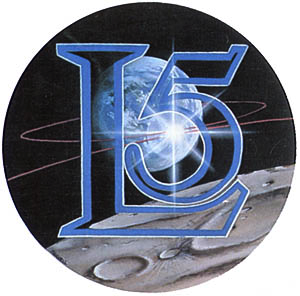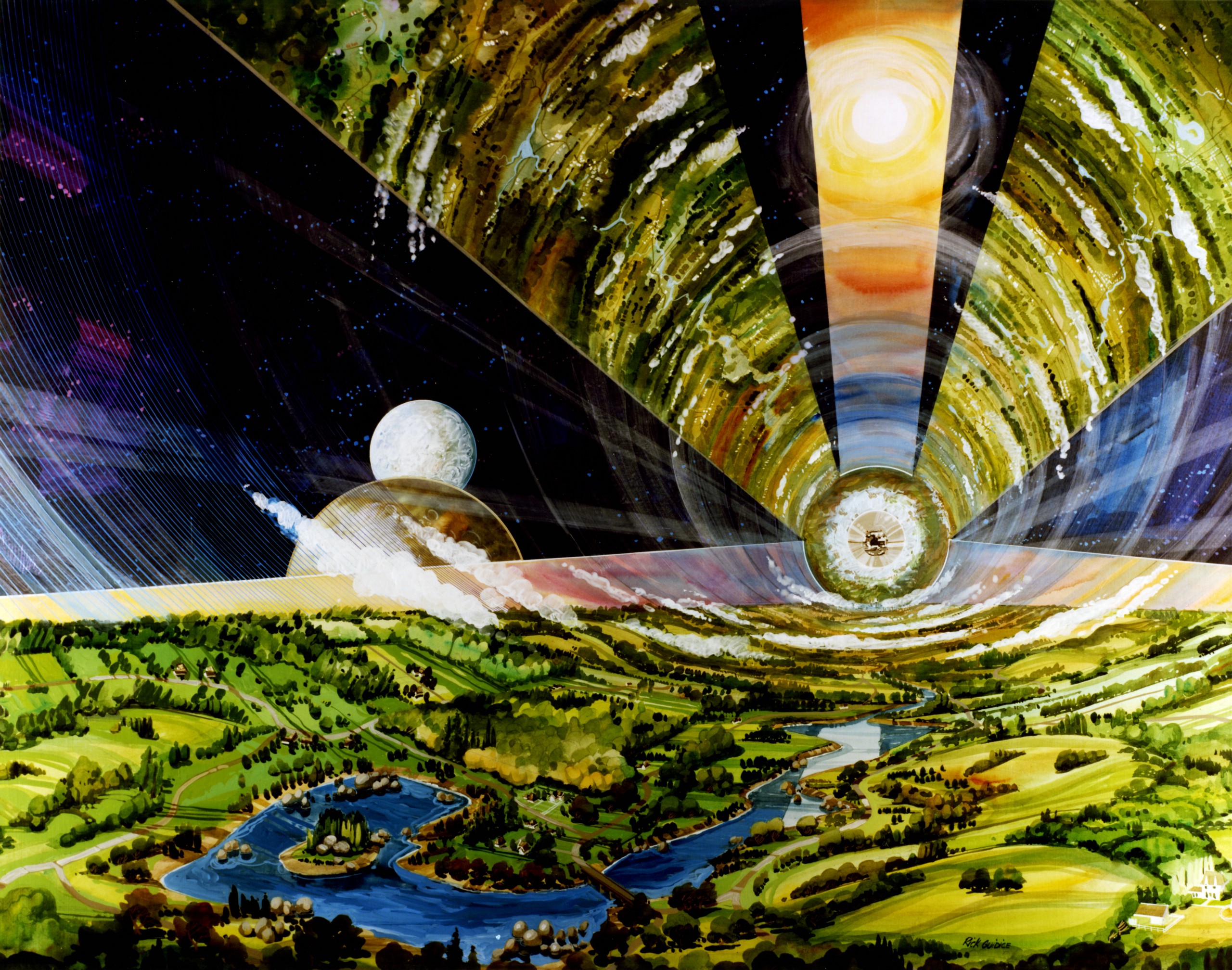The L5 society was a group in the 70's–80's that advocated for the colonization of space, in particular the Earth-Luna L5 Lagrange point. They were heavily inspired by Gerard O’Neill’s book The High Frontier, which described how technology already available at that time could be employed to build an orbital colony vessel.

O’Neill proposed a cylindrical colony design, with a pair of 8km×32km cylinders rotating in opposite directions at about 3rpm to approximate Earth’s gravity. The counter-rotation would cancel out the gyroscopic force, helping to keep the station properly aligned with the sun.
(Though 3rpm sounds like it would be a little sickening! Look at that painting below, and imagine the sun zipping around all three of those window sections every 20 seconds. That’s about 3 seconds from left to right of each section. I guess you’d get used to it, but I bet new arrivals would spend a few days staring intently at their feet.)
Getting something that big out of Earth’s atmosphere and gravity well would be next to impossible, so O’Neill proposed building the stations using materials that were already conveniently placed—on the Moon or from an asteroid. From there, you’d ferry the stuff over to Earth-Luna L5 and construct the station in-situ.

The L5 society counts as one of its great victories the non-signing of the Moon Treaty by the US. I’m not sure that’s entirely a good thing—I think humans should work together to enter space more-or-less unified, not scrabbling to seek profit and sell the Moon to the highest bidder. It turns out to have been more or less a moot point thus far, since launch costs and political iciness re: space exploration in the 80's up to the present have prevented any significant excursions, but with Falcon Heavy set to fly in November and New Glenn hot on its heels we might find we have renewed interest in regulating who can do what in space. A free-for-all doesn’t seem like it would end well.
The L5 society is no longer, but in its place is the National Space Society, advocating for the dream of living and working in space from its adorably 90's web page.
